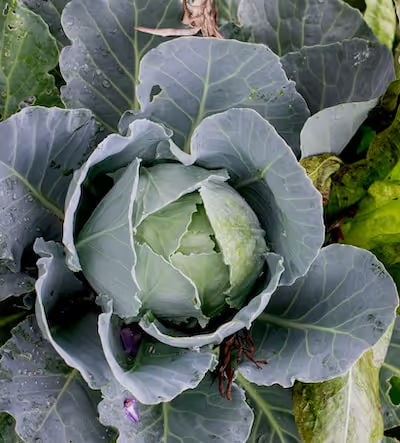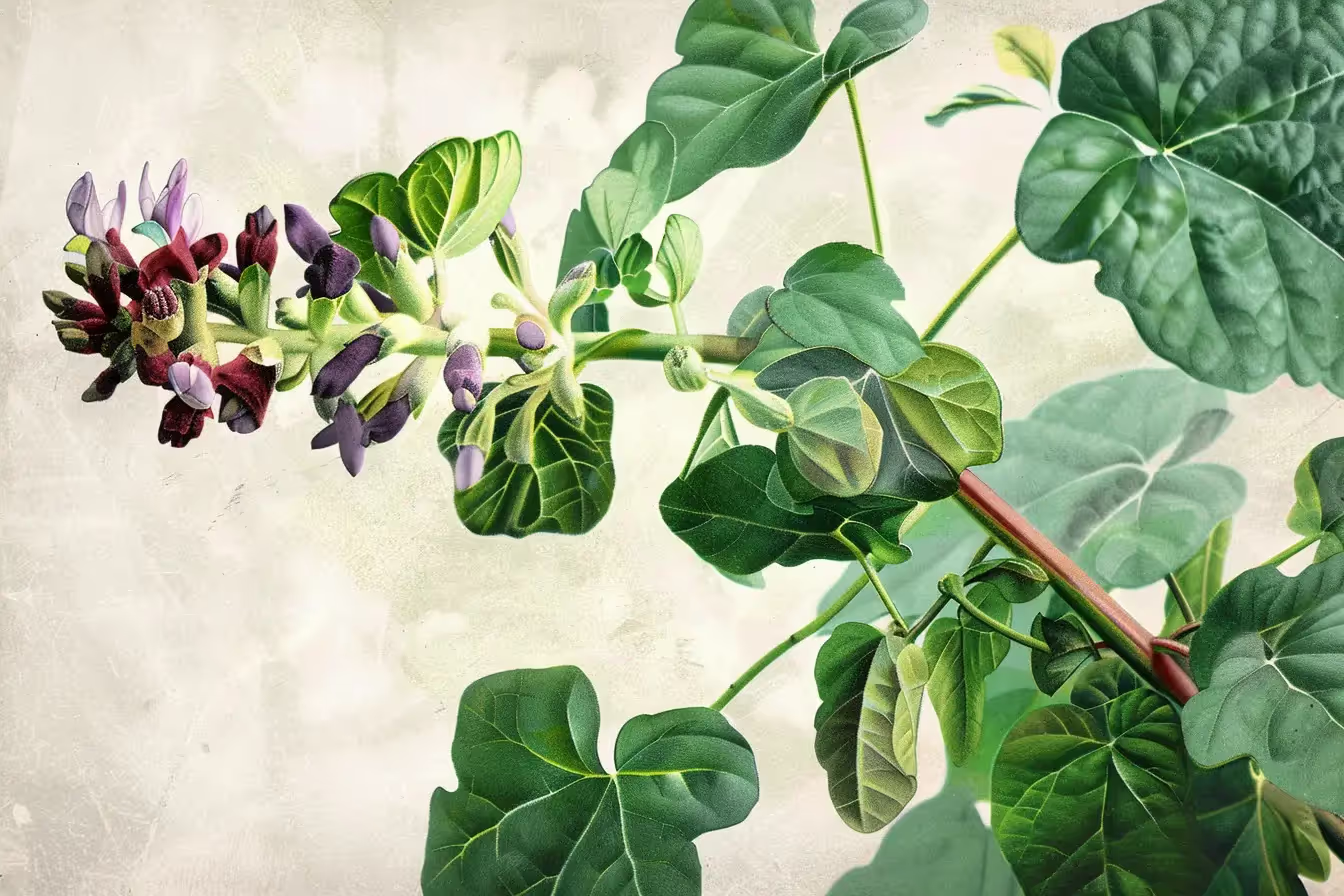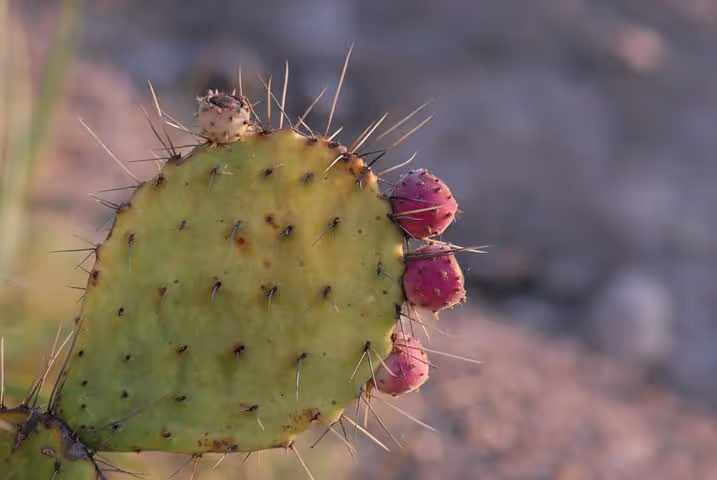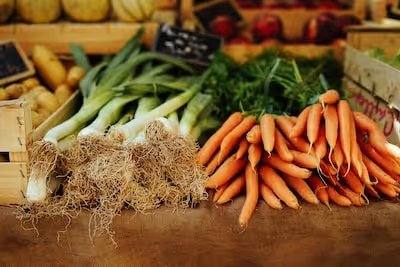Growing Horseradish: A Tangy, Spicy Garden Essential
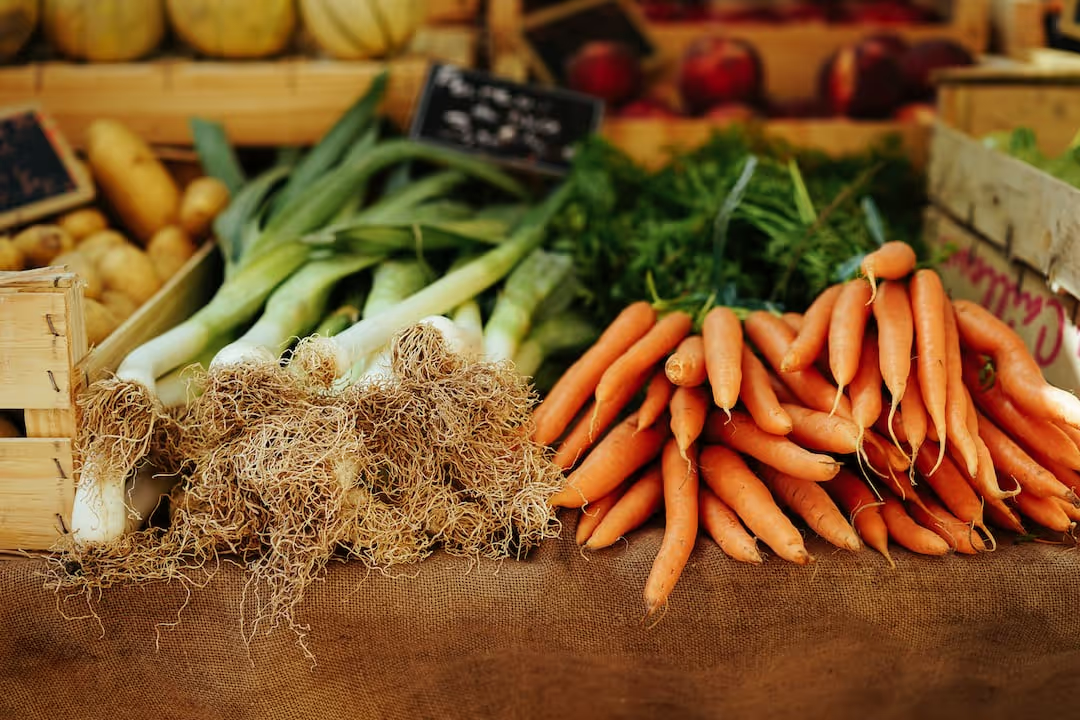
Growing Horseradish
Growing horseradish rewards gardeners with a fiery root that punches flavor into homemade sauces, pickles, and marinades. Plant horseradish root cuttings in early spring, provide full sun and loose, well-draining soil, and soon you'll harvest tangy, spicy roots straight from your backyard. Growing horseradish at home requires minimal effort yet provides maximum taste—read on to transform your garden beds into a bold, flavorful pantry staple.
Cheatsheet: Quick Horseradish Growing Guide
🌱 Planting Basics
- Time: Early spring, after frost (15 min)
- Soil: Deep, loose, well-drained; pH 6.0–7.5
- Light: Full sun for best flavor
- Spacing: 18–24 in (45–60 cm) between roots
- Temperature: 45–75°F (7–24°C)
🛠 Tools and Products You'll Need
- Spade or shovel
- Garden fork
- Horseradish root cuttings ("sets")
- Compost or well-rotted manure
- Mulch (optional)
- Garden gloves
🌾 Planting Steps
- Dig trenches 6–8 in (15–20 cm) deep.
- Add compost to improve soil.
- Plant cuttings at a 45° angle, top up, 2 in (5 cm) below soil.
- Cover and firm soil gently.
- Water in thoroughly.
💧 Ongoing Care
- Water: 1 in (2.5 cm) weekly; avoid soggy roots
- Fertilize: Once, midseason, balanced fertilizer
- Weed: Regularly, roots dislike competition
- Mulch: Retain moisture & suppress weeds
⏳ Harvest & Storage
- Harvest: After first fall frost, 10–12 months after planting (10 min per plant)
- Dig carefully, keep smaller side roots for replanting
- Storage: Crisper drawer or root cellar, 3–4 months
🍽 Health, Flavor & Self-Sufficiency
- High in Vitamin C and antioxidants
- Aids digestion, supports immune health
- Grated fresh, 4× stronger flavor than jars
- One root can start a perpetual harvest
-
Growing Horseradish: a tangy, spicy garden essential
I grow horseradish for its thunderclap flavor and for the joy of lifting a fat, ivory root from cool soil. This crop pays rent in any bed.
What horseradish wants
Full sun with afternoon shade in hot summers keeps leaves crisp and roots dense. I give it deep, loose loam with a pH near 6.5 to 7.2.
Roots swell fast in soil that drains yet holds moisture. Aim for about 1 inch of water per week, or 25 mm.
Planting sets the right way
I use root cuttings called sets. Each set runs 8 to 10 inches long, or 20 to 25 cm.
Plant in early spring once soil is workable at 45 to 50 F, or 7 to 10 C. Angle the set at roughly 45 degrees with the top 2 inches down, or about 5 cm (University of Illinois Extension).
Space 18 to 24 inches apart, or 45 to 60 cm. Keep rows 30 inches apart, or 75 cm, so you can reach in to groom roots.
Contain the beast
This plant wanders through any gap like a street poet with a passport. I corral it in a bottomless container sunk in the bed.
Use a 15 to 20 gallon pot, or 57 to 75 L, at least 18 inches deep, or 45 cm. Or install a root barrier 24 inches deep, or 60 cm.
Feeding, watering, mulching
I mix in 1 to 2 inches of finished compost, or 2.5 to 5 cm. Too much nitrogen blows up leaves and starves the root.
Use a balanced fertilizer at planting, then switch to a higher potassium feed midseason. Mulch 2 inches thick, or 5 cm, to keep soil cool.
Grooming for premium roots
At midsummer I pull back mulch and snip off small side roots on the top 6 inches of the crown. This channels energy into one clean main root.
I repeat once more in late summer and tuck the mulch back. Commercial growers do the same to sharpen quality (University of Wisconsin Horticulture).
Heat, chemistry, and that tear-triggering magic
Myrosinase enzymes convert sinigrin to allyl isothiocyanate when cells get shredded. The spice rises as the clock ticks.
For gentler heat, add 5 percent vinegar right after grating. For a blast, wait 3 to 5 minutes, then add vinegar to lock the burn.
“Plants need a long growing season, roughly 150 to 180 days.” (Ohio State University Extension)
Harvest timing that hits flavor
I harvest after a hard frost near 28 to 32 F, or minus 2 to 0 C. Cold concentrates bite and firms texture.
Lift the crown with a spading fork, never a shovel. Keep side shoots for next year’s sets.
Processing that won’t torch your sinuses
I grate outdoors or under a vent, with goggles if the batch is big. Those fumes will find your eyeballs like heat-seeking bees.
Peel just before use. Add a pinch of salt and vinegar as above, then chill to mellow.
Storage that holds the fire
Wrap whole roots in a damp towel inside a bag and keep at 32 to 40 F, or 0 to 4 C. Root cellars with high humidity work best.
Grated horseradish keeps a few weeks in the fridge. Freeze in small jars for longer.
My go-to cultivars and why
- ‘Big Top Western’: clean, uniform roots and steady yield. Good disease tolerance in my plots.
- ‘Common’: tough and forgiving. Flavor leans classic and hot.
- ‘Bohemian’: narrower roots, easy to peel. Handles variable soils.
- ‘Maliner Kren’: dense roots and strong heat. I plant it for winter sauces.
Order certified disease-free sets from specialty growers. Skip mystery crowns from the grocery bin.
Pests and diseases I actually see
Flea beetles pock leaves in spring. I cover beds early and dust with wood ash or use a labeled spinosad rotation if needed.
Cabbageworms chew ragged holes. BT kurstaki knocks them back while sparing allies.
Aphids cluster under leaves. A hard water jet clears them, and lady beetles finish the job.
White rust shows as white blisters, and Alternaria leaf spot leaves dark lesions. Remove infected leaves and keep air moving.
Use clean sets to avoid mosaic virus. Rotate out of Brassica beds for 3 years.
Site strategy and companions
I give horseradish its own lane away from broccoli and cabbage. Shared pests adore that buffet.
Plant near onions or garlic for a little pest confusion. The scents mingle and help.
Zones, climate, and bolt control
Growing Horseradish runs best in USDA zones 3 to 9. Heat above 90 F, or 32 C, slows root fill.
Flowers look pretty on tall stalks, yet they steal energy. I snip them as they form.
Nutrition and kitchen notes
Horseradish packs about 25 mg vitamin C per 100 g and negligible fat, yet the flavor smacks like a cymbal (USDA FoodData Central). A little lifts a roast, oysters, or beets.
Most “wasabi” sold is horseradish with color added, not true Wasabia japonica (Kew Gardens). Freshly grated beats any jar.
Commercial and gear checklist
- Buy certified sets in late winter for spring planting.
- Pick a stout box grater or a food processor with a fine disk.
- Use white vinegar at 5 percent acidity and canning salt for stable flavor.
- Choose 18 to 24 inch deep beds, or 45 to 60 cm, for straight roots.
- Row cover keeps flea beetles off young leaves.
- Heavy gloves, eye protection, and sealable glass jars save tears and aroma.
Cost, yield, and why I keep a patch
One $10 set can yield 2 to 4 pounds of root, or 0.9 to 1.8 kg, in rich soil. Side shoots restock the bed for years.
In Collinsville, Illinois, farms supply about 60 percent of U.S. horseradish, which tells you how well this crop performs in the Midwest (University of Illinois Extension).
Calendar by season
Early spring: plant sets, install barrier, and mulch. Late spring: side-dress lightly and scout pests.
Summer: water steadily and groom side roots twice. Early fall: stop nitrogen and weed clean.
Late fall: harvest after frost and store. Winter: grate for sauces and label sets for spring.
Propagation that never misses
I cut pencil-thick side roots into 6 to 8 inch sets, or 15 to 20 cm. I mark the top end with a notch so I plant orientation correctly.
Store sets in barely damp sand at 34 to 38 F, or 1 to 3 C, until spring. Mold means too wet or too warm.
FAQs I hear at the fence
Invasive or just pushy. It spreads by root fragments, so contain it and lift stragglers during spring weeding.
Safe for pets. Leaves and roots taste fierce and usually get ignored, yet the fumes irritate eyes and noses.
Edible leaves. I use small young leaves cooked like mustard greens, and I skip old leaves with tough ribs.
Flavor cousins and spicy stand-ins
- Fresh wasabi: rare, fussy, thrilling, and expensive.
- Brown mustard seed: toasty heat and easy to grow for seed.
- Daikon and winter radishes: milder bite with crisp crunch.
- Rocket and mustard greens: quick salad heat in any season.
Why Growing Horseradish fits small gardens
I tuck one plant at a bed corner and harvest around it each fall. The patch becomes a pantry with roots on tap.
Sources I trust and re-read
University of Illinois Extension: planting depth, spacing, and regional production. University of Wisconsin Horticulture: field grooming and quality.
Ohio State University Extension: season length and culture. Kew Gardens: wasabi vs horseradish. USDA FoodData Central: nutrition.
Frequently Asked Questions about Growing Horseradish
What type of soil encourages healthy horseradish growth?
Horseradish thrives in loose, well-draining soil enriched with plenty of organic matter. Aim for a soil pH between 6.0 and 7.5 for optimal results. Heavy clay soils can restrict root development, so consider mixing in compost or aged manure to improve aeration and drainage.
How much sunlight does horseradish require?
For vigorous root development, horseradish needs full sun, approximately six to eight hours of direct sunlight per day. While it tolerates partial shade, full sun exposure will encourage stronger plant growth and more flavorful roots.
When is the best time of year to plant horseradish?
Plant horseradish in early spring, as soon as the soil is workable and temperatures are consistently above freezing (around 40°F or 4°C). This timing lets roots establish effectively before summer arrives.
How frequently should horseradish plants be watered?
Horseradish plants benefit from consistently moist soil, requiring approximately 1 to 2 inches (2.5 to 5 cm) of water per week. Check soil moisture regularly; watering more frequently during dry spells promotes healthy root growth and prevents woody texture.
What's the best method and timing for harvesting horseradish roots?
Harvest horseradish roots in late autumn, typically after the first frost when foliage begins to wither. Loosen the soil carefully around the root area with a garden fork, then gently lift and remove the roots. Selecting younger, thinner roots yields superior flavor and easier preparation.
Can horseradish become invasive in a garden?
Yes, horseradish plants spread vigorously and can invade other areas of your garden. To control spreading, consider growing horseradish roots in raised beds or deep containers or establish physical barriers underground.
How should harvested horseradish be stored to maintain freshness?
After harvesting, thoroughly wash and dry horseradish roots. Store them in perforated plastic bags or wrapped in damp paper towels inside the refrigerator. Properly stored, fresh horseradish roots maintain quality for up to three months.
Growing horseradish brings a wild kick to your garden and your kitchen. This root doesn’t ask for much—just rich soil, steady moisture, and a little patience. Give it space, and you’ll reap bold, spicy flavor that wakes up everything from roasts to cocktails. Dig deep in fall for the freshest roots, and don’t be shy about sharing with friends—horseradish multiplies like gossip at a backyard barbecue. If you’re hungry for more punchy plants, check out perilla or sorrel—they’ll keep your garden and palate on their toes. In the end, growing horseradish is about flavor, tradition, and a bit of grit. Plant it once, and it’ll stick around—just like the best stories.
The Prepper’s Guide to Horseradish Cultivation & Preservation
Long-Term Storage Techniques
- Cellar Storage: Store whole horseradish roots unwashed, layered in sand or sawdust at 32-40°F (0-4°C), maintaining freshness for up to six months.
- Dehydration: Slice roots thinly, dry at 125°F (52°C) until brittle, then powder to create a long-lasting seasoning rich in compounds beneficial for digestion and circulation.
- Fermentation: Grate finely, combine with salt to make fermented horseradish paste, preserving nutrients and probiotic properties for two months refrigerated.
Medicinal and Nutritional Value for Self-Sufficiency
- Immune System Support: High in glucosinolates, antioxidants, and vitamin C, horseradish consumption supports immune function and respiratory health.
- Antibacterial Properties: Allyl isothiocyanate content inhibits bacteria growth, ideal for natural preservation and wound antiseptic.
- Digestive Aid: Stimulates gastric secretions, aiding digestion and metabolism during limited food availability scenarios.
Strategic Horseradish Planting for Food Security
- Perennial Advantage: Plant strategically near kitchen gardens or perimeter zones to repel pests naturally and ensure renewable harvests over several years.
- Companion Planting: Integrate horseradish with potatoes, fruit trees, or berry bushes, repelling fungal pathogens and aphids while maximizing yield efficiency.
- Propagation Ease: Multiply plants effortlessly by root cuttings; increase crop resilience and encourage food independence without additional costs.
Stat Watch: Why Preppers Value Horseradish
- A single mature plant yields approximately 1 to 2 pounds (0.4 to 0.9 kg) of root annually, sufficient for personal consumption plus preservation.
- Dried horseradish powder retains nutritional potency for up to three years stored in airtight conditions, ideal for survival reserves.
Find out which plants will thrive in your garden!
Answer a few fun questions and get custom plant recommendations perfect for your space. Let’s grow something amazing together!

start your season

